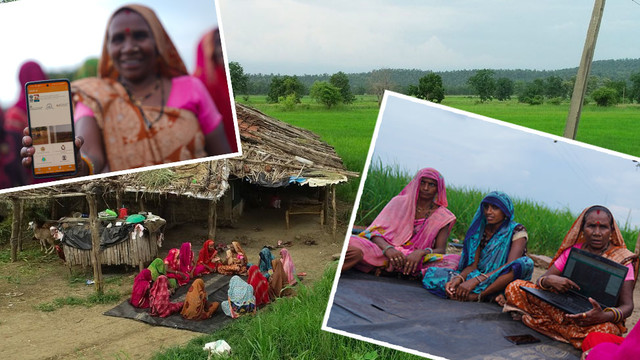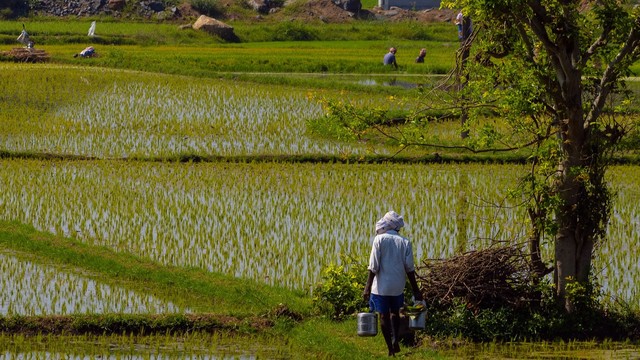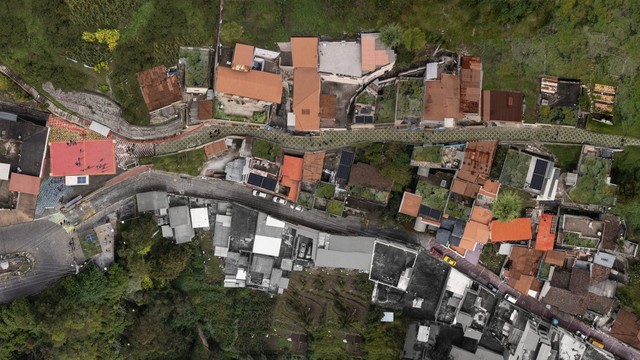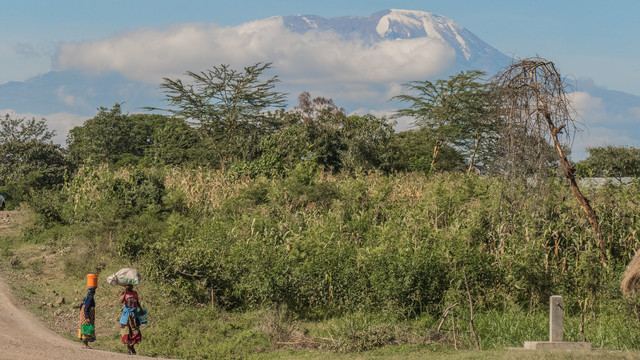Insuring farmers – adapting to climate change
Climate change is increasing the risks for farmers, but a new form of insurance may provide support.


A farmer in Tanzania shows the effects of drought on her maize crop. Farmers in developing countries, and women farmers in particular, find it difficult to get multi-peril crop insurance (Photo: Anne Wangalachi, CIMMYT, CC BY-NC-SA 2.0)
As the risks of natural disasters due to climate change increase, insurance has been put forward as a potential way of supporting small-scale farmers in developing countries to help them to manage the risks.
Due to fears of natural disasters damaging their crops, farmers are likely to be risk averse and not invest sufficiently in their farms. Insurance can help provide a safety net and absorb the risks of potential hazards.
Having insurance can also build financial resilience as it helps farmers to access credit assistance more easily, allowing them to innovate and invest in technologies that boost productivity.
But farmers in developing countries have traditionally been unable to secure coverage through multi-peril crop insurance. This lack of access affects women farmers in particular, compounding existing problems with a lack of credit and financial advice.
A new kind of insurance
To offer protection to these farmers a new form of insurance, known as index-based insurance, is gaining currency, particularly in the developing world. It pays out according to a predetermined index for asset and investment losses, such as the loss of agricultural crops.
The index, made before the insurance period starts, calculates deviations from the norm for factors such as temperature, rainfall, crop yield, livestock mortality rates, seismic activity and wind speed. Payouts occur when the index falls above or below a pre-specified threshold. The threshold and deviations from it are usually set via historical data and projections, according to an International Fund for Agricultural Development guide (PDF).
Contracts pay out when a certain measurement point is triggered (such as cumulative millimetres of rainfall). Payouts are often calculated on an incremental scale, with a set maximum limit of payout.
Where schemes are designed in consultation with farmers, they can determine payouts to help restart production and provide support during disrupted periods. UN-DESA has suggested (PDF) that both the index and thresholds should be set in consultation with agro-meteorologists and farmers to fully understand local conditions.
Index insurance is not designed to protect farmers against every possible loss, but instead support them against a large-scale or regional risk, or a particular climate risk. Insurance companies have a better basis to assess the probabilities of payouts because of the predetermined index of hazards.
The specified index allows insurers lower overheads with less need to dispatch assessors. Lower costs mean cheaper premiums for smallholder farmers.
Limits to index-based insurance
Index-based insurance is not always appropriate or adequate. Policies may not be accurate enough to cater to an individual farmer's circumstances. As several farmers are likely to be covered by the same index formula and data sources, some farmers may receive a payout even if they have not lost crops. Or alternatively they may experience losses when a payout is not triggered.
Indexes must take into account these tensions, although they can never be eliminated. Robust measurements to inform the index are crucial (PDF), and indicators must be easy to quantify and be able to be measured independently. Weather-based indices such as wind speed, rainfall and river-water levels have been promoted by large reinsurers such as Munich Re and Swiss Re (PDF).
Part of a broader adaptation strategy
There remain broader questions over whether insurance can be beneficial or if it could stifle adaptation. Insurance for crops could undermine local adaptation with farmers being incentivised to cultivate cash crops, rather than more climate-resistant varieties.
And because climate change makes predicting regional weather harder and traditional agriculture riskier, index-based insurance schemes can only be of limited support (PDF). Insurance cannot be the only adaptation tool and instead should be part of a broader adaptation strategy, such as encouraging farmers to diversify crop varieties.
Innovations in index-based insurance
Schemes have piloted innovative elements to better support farmers. In Ethiopia and Senegal, the Rural Resilience Initiative (R4) has targeted smallholder farmers previously considered uninsurable. Farmers are consulted on what needs to be insured and when, and on elements of the insurance contract, such as the frequency of payouts.
R4 has also integrated an 'insurance through work' programme allowing traditionally cash-poor farmers who are unable to pay up front premiums, to pay for insurance with their labour.
The Agriculture and Climate Risk Enterprise (ACRE) project in East Africa combines insurance with agricultural credit from microfinance institutions. This means farmers have access to credit to buy new farming technologies to increase productivity.
When carefully calibrated to specific circumstances in collaboration with farmers themselves, index-based insurance schemes have succeeded. They can form an important part of a toolbox of other mechanisms to support farming communities to adapt to greater risks as a result of climate change.
Bruno Friedel (brunofriedel1@gmail.com) is a consultant working with IIED's Sustainable Markets Group.



